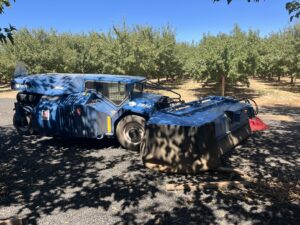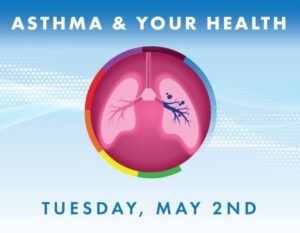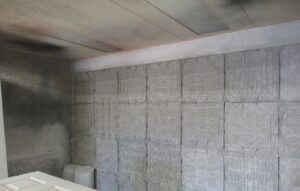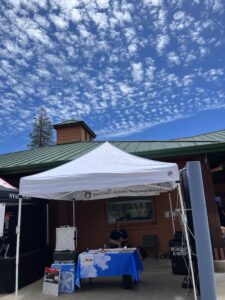May 1 through May 5 2023 is Air Quality Awareness Week!
Air Quality Awareness Week is promoted by federal, state, local, and tribal agencies to share information with the public about efforts to protect and improve air quality. Each day this year has a different air quality theme. The links below will take you to the US EPA page for each topic which includes great resources for educators, healthcare professionals, and the public.
- Monday, May 1 – Wildfires and Smoke
- Tuesday, May 2 – Asthma and Your Health
- Wednesday, May 3 – Air Quality and Transportation
- Thursday, May 4 – Air Quality and Climate
- Friday, May 5 – Participatory Science
We’ll be adding local information and perspective below each day!
 What do prescribed fire, low cost sensors, and goats have in common? Community Participation! Communities and individuals all around Butte County have participated in ways to reduce wildfire risk and track air quality conditions.
What do prescribed fire, low cost sensors, and goats have in common? Community Participation! Communities and individuals all around Butte County have participated in ways to reduce wildfire risk and track air quality conditions.
Low-cost air quality sensors have helped fill in the gaps with knowing how smoke is impacting communities in Butte County. Smoke could be coming from wildfires, prescribed burning – which is necessary to prevent catastrophic wildfires, open burning, or burning in a woodstove or fireplace. Some of these sensors were installed by BCAQMD but many more are owned and maintained by community members. The Airnow Fire and Smoke Map is a great place to see official air quality monitors working in tandem with community sensors to inform the public about smoke impacts.
The largest source of particulate pollution in Butte County is wildfire smoke. Wildfire prevention is also work to prevent hazardous air quality conditions in Butte County. That’s why BCAQMD is supportive of the local Fire Safe Councils, Resource Conservation Districts, and other agencies and organizations that leverage community action to help reduce wildfire risk.
Thursday, May 4: Air Quality and Climate
 The Butte County Air Quality Management District incentive programs have reduced tons of smog-forming pollutants and particulates over the years through woodstove replacements, and heavy-duty equipment replacement projects. Grants have also reduced the emissions of toxic air contaminants like diesel particulates. This is important in Butte County because the areas has had issues meeting state and federal air quality standards for ozone and fine particulates (PM2.5). Another benefit from all these projects is the reduction in greenhouse gas emissions! The FARMER Program by itself has resulted in a reduction of 1,142 Metric Tons of CO2 equivalent through the replacement of agricultural equipment.
The Butte County Air Quality Management District incentive programs have reduced tons of smog-forming pollutants and particulates over the years through woodstove replacements, and heavy-duty equipment replacement projects. Grants have also reduced the emissions of toxic air contaminants like diesel particulates. This is important in Butte County because the areas has had issues meeting state and federal air quality standards for ozone and fine particulates (PM2.5). Another benefit from all these projects is the reduction in greenhouse gas emissions! The FARMER Program by itself has resulted in a reduction of 1,142 Metric Tons of CO2 equivalent through the replacement of agricultural equipment.

Wednesday, May 3: Air Quality and Transportation
Most smog-forming pollutants and greenhouse gases are emitted through the transportation sector. Fortunately, there are many ways to reduce the emissions of your ride. Riding a bike or taking transit are a great start! If you’re purchasing a new low-emission vehicle – be sure to check for rebates with the California Vehicle Rebate Program (CVRP) to save some money. If you’re looking for something bigger, check the Hybrid and Zero-Emission Vehicle Incentive Program (HVIP) for trucks, vans, and buses. If you need a clean off-road vehicle – take a look at the Clean Off-Road Equipment Program (California CORE).
Air Quality Compliance Specialist II Dave Campbell shares another example of how air quality and transportation intersect:
Air Quality Never Sleeps
Most gasoline service stations are open 24-hours, 365 days a year. Vapor recovery equipment only works if the equipment is installed, maintained, and operates as designed. District inspectors perform numerous inspections to ensure all equipment is operating in compliance which helps reduce smog-forming VOCs and limits the public’s exposure to benzene, a toxic air contaminant.

Tuesday, May 2: Asthma and Your Health
 Today is World Asthma Day! Visit today’s AQAW Page on Asthma to learn more about how air quality can impact asthma. Many of the sources of air pollution that BCAQMD regulates can exacerbate asthma at high enough concentrations. Patrick Lucey, BCAQMD Assistant Air Pollution Control Officer shares this information on how certain activities are regulated in Butte County to reduce emissions:
Today is World Asthma Day! Visit today’s AQAW Page on Asthma to learn more about how air quality can impact asthma. Many of the sources of air pollution that BCAQMD regulates can exacerbate asthma at high enough concentrations. Patrick Lucey, BCAQMD Assistant Air Pollution Control Officer shares this information on how certain activities are regulated in Butte County to reduce emissions:
Permitting and Enforcement helps keep Air Quality in the Green
The Butte County Air Quality Management District enforces federal and state stationary source permitting requirements for almost 800 facility processes that create air pollution to protect the health of the public. Examples of facility processes that require air district permitting are gas stations, gasoline storage terminals, printing presses, asphalt/concrete batch plants, cabinet shops, dry cleaning operations, large boilers/water heaters, large generators, incinerators, paint booths, rice/nut processing and wood product manufacturing. Permitting requirements vary depending upon the process at the facility. Some examples of permit requirements are:
- Retail gas stations are required to pass performance testing annually to ensure the vapor recovery systems are in working order. District staff attend these performance tests to make sure they are conducted correctly.
- Large-scale printing presses have daily throughput limits to ensure the amount of Volatile Organic Compounds (VOC’s) released do not exceed state regulations.
- Asphalt/Concrete batch plants are required to install Particulate Matter (PM) emissions controls and may also have throughput limits.
- Large natural gas/propane boilers and water heaters need to be the Low-NOx type to ensure Nitrogen Oxide (NOx) releases are minimal.
- Dry cleaning operations must keep their chemicals in sealed containers and make sure their equipment is free from leaks that can release the chemicals into the air.
- Paint booths must have filters installed at all times to capture PM while painting is occurring, and all paint/solvents must be kept in sealed containers to limit the release of VOC’s.
- Rice/Nut processing facilities must install air filtration systems to capture PM.

Filters installed in a paint booth
If any of the above facility processes are proposed to be installed within 1000 feet of a K-12 school, a health risk assessment is performed to estimate the impacts of these emissions on the students/staff at the school in question. If the risk is too high, the facility will not be allowed to install the proposed equipment.
Permitted facilities are inspected by District staff regularly to ensure permit requirements are being met. If permit violations are found, the facility must work with the District to regain compliance.
Monday, May 1: Wildfires and Smoke
 “I have personally been affected by three of the large-scale wildfires in the past six years. With the losses experienced and the knowledge I have gained working with the Air District, I have developed a passion for working with the public and creating awareness that each person CAN make a difference when it comes to fire hazard reduction and air pollution.
“I have personally been affected by three of the large-scale wildfires in the past six years. With the losses experienced and the knowledge I have gained working with the Air District, I have developed a passion for working with the public and creating awareness that each person CAN make a difference when it comes to fire hazard reduction and air pollution.
Since the devastating losses from the 2018 Camp Fire, Butte County residents are constantly looking for ways to combat large scale fires from ever happening again. In both 2022 and 2023, I attended the Paradise, California Goat Grazing Festival. I am amazed at the amount of people who have started residential burning for fire hazard fuel reduction. Many of the people I talk with follow the District’s daily air quality updates, subscribe to our daily emails, or are actively participating in the Purple Air Sensor monitoring capabilities to ensure they are doing everything possible to keep their families safe.” Samuel Nassie – BCAQMD Air Quality Compliance Specialist

Butte County is unfortunately no stranger to wildfire smoke. 2018, 2020, and 2021 were especially devastating years. Now is the time to prepare by making your home or business smoke-ready. Visit Airnow’s page on getting smoke-ready – there’s info on how to make a clean room and how to make a DIY box fan filter!
The Fire and Smoke Map from Airnow has been vastly improved over the past few years and now features additional particulate sensors for better coverage in Butte County. Definitely a great site to have bookmarked!
If you want to check back in with us for wildfire smoke information, our wildfire page at https://bcaqmd.org/resources-education/wildfires is updated throughout the year.




